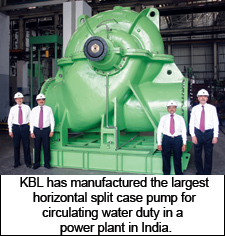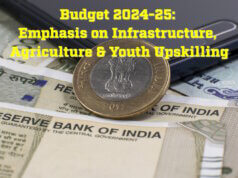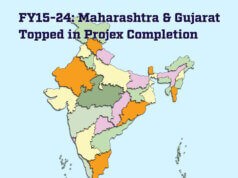 The market demand for pumps will be driven by investments in water and irrigation and other industry segments. However, it will be influenced by decisions and policies taken for infrastructure projects, especially power and irrigation projects, says Aniket Kulkarni, Head – Corporate Strategy, Kirloskar Brothers Ltd.
The market demand for pumps will be driven by investments in water and irrigation and other industry segments. However, it will be influenced by decisions and policies taken for infrastructure projects, especially power and irrigation projects, says Aniket Kulkarni, Head – Corporate Strategy, Kirloskar Brothers Ltd.
Economies around the globe have witnessed an unprecedented economic slowdown over the last six to seven years. The developed world hasn’t grown and the developing world hasn’t grown as fast as it should have. But given that pumps are at the “heart” of engineering systems in all segments of the economy, in mid term to long term, the pump industry will show a steady growth. Global demand for pumps is forecast to rise 7 per cent per year over the next five years to reach $75.4 billion in 2016. There will be a strong demand for pumps from developing countries like China and India due to industrialisation and investments in infrastructure.
In India, at present, the pump industry, like any other industry, is going through challenging times. India’s gross domestic product (GDP) grew by only 5.5 per cent in 2012-13, the lowest growth rate in the last three years. This growth rate is much lower than the 7 per cent to 8 per cent growth rate India has witnessed in most parts of the last decade. A weak performance by the manufacturing, agriculture and services sectors slowed the pace of economic expansion in the current year.
Even now, the business sentiments remain weak despite reform initiatives. Weak industrial performance is likely to persist on account of factors like lacklustre external demand and absence of reliable power supply source amidst coal shortages. Infrastructure projects in power and road construction are held back by problems like coal supply, environmental clearances, land acquisition and financial closure.
But over mid term to long term, the pump market in India will grow significantly as India aspires to take a centre stage on the global economic landscape. In spite of the ongoing challenges, we expect the Indian pump industry to grow at 8 per cent year-on-year to reach Rs.14,000 crore by 2017-18 from Rs.7,500 crore currently. The market demand will be driven by investments in water, irrigation, oil and gas and industry segments. The market to an extent will be influenced by decisions and policies taken for infrastructure projects, especially power and irrigation projects.
 Growing market
Growing market
The pump industry is mature with numerous players. India, with its growing market, is the focus market of several global companies. Given the variety of segments and applications where pumps are required, every company tries to carve out a unique strategic position in the market.
Kirloskar Brothers Ltd is the leader in the Indian pump industry. Our customer base is broad, encompassing virtually every segment of the economy. From power market to domestic market, KBL’s presence is seen everywhere. KBL pumps are at the heart of all the hydraulic systems, whether it is a critical process application, a large water supply scheme, an irrigation scheme or a power plant. We leverage our expertise in hydraulic systems to provide customised and optimised solutions to our customers, thereby providing maximum benefit to them.
The world population has already crossed seven billion and is expected to reach eight billion by 2030. At the same time, humans are aspiring for better quality of life. The resulting growth in the economy puts an undue pressure on the natural resources like water, air, oil, land and the environment at large. If timely corrective actions are not initiated, it shall lead to devastating results for present and future generations. The challenges with respect to sustainable growth are posed before human beings.
Today, in India, as in the rest of the world, there is a huge thrust on clean energy generation. It is also very essential to use energy efficient products and systems. Lifecycle cost analysis reveals energy cost is a major component of total cost of ownership of any power driven products. The operating and maintenance costs constitute approximately 80 per cent of the lifecycle cost of pumps. Pumps consume 30 per cent of the total power generated. Thus, some customers are changing their procurement approach from price of acquisition to cost of ownership of the products. Eventually, regulations are bound to come into effect which will enforce usage of energy efficient products.
Thus, there is a significant role for the pump industry to play in contributing towards the cause of sustainability. For example, municipal water utilities in India spend upwards of 60 per cent of their budgets on energy for water pumping. A study suggests that savings of at least 20 per cent are possible with installation of high-efficiency pumps, improved piping designs, modern coatings for system efficiency improvement, installation and harmonisation of high-efficiency variable speed pump drives and regular energy audits. We believe there will be an increased demand for energy efficient pumps in the future.
Our nation needs to act faster to align ourselves with the sustainability objectives. In the long term, both the government and non-government organisations stand to benefit significantly if they adopt sustainability centric practices.











